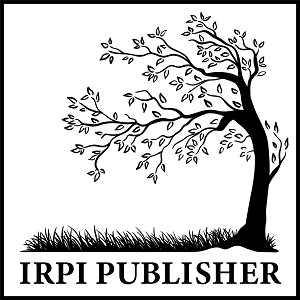ADDITIONAL MENU
Exploratory Data Analysis of Indonesian Presidential Election Candidate Campaign in 2019 on Twitter
Abstract
Social media users in Indonesia are growing over time, this has caused many political actors, both individuals, and political parties, to take advantage of this. According to Hootsuite (We are Social) in the Digital 2022 report, Indonesia has 191 million active social media users, so there will be many political actors campaigning on social media. In the literature that discusses similar topics, it is rare to analyze comprehensive exploratory data analysis such as text analysis, hashtags, and social network analysis. From the data analysis conducted in the 2019 Election, the following results were obtained. In text analysis, the narratives used by the two candidates were very different, it was seen that some used other positive and negative narratives. The hashtag analysis found that consistency in campaigning had an influence on electability in the election. In the analysis of social networks, it is found that users who influence social media campaigns, users who appear are not only politicians but also ordinary people who try to support their chosen candidate. The research conducted is expected to be a basic reference in exploring data on social media in other cases, especially in the political field
Keywords
Campaign; Exploratory Data Analysis; Politics; Social Media Analysis; Twitter
Full Text:
PDFReferences
N. Anstead and B. O’Loughlin, “Social media analysis and public opinion: The 2010 UK general election,” J. Comput. Commun., vol. 20, no. 2, pp. 204–220, 2015, doi: 10.1111/jcc4.12102.
Elsam Multimedia, “Pemanfaatan Media Sosial dalam Iklan Kampanye Politik Pemilu 2019 (Bagian I),” 2020. Pemanfaatan Media Sosial dalam Iklan Kampanye Politik Pemilu 2019 (Bagian I) (accessed Oct. 10, 2022).
L. A. Abdillah, “Social Media As Political Party Campaign in Indonesia,” no. 12, pp. 1–10, 2014.
E. A. and B. Q-Anees, Filsafat Ilmu Komunikasi, 4th ed. Bandung: Simbiosa Rekatama Media, 2014.
I. H. Harahap, “Kampanye Pilpres 2019 Melalui Media Sosial Dan Pengaruhnya Terhadap Demokrasi Indonesia,” Komunikologi J. Ilm. Ilmu Komun., vol. 17, no. 1, pp. 1–11, 2020.
B. Heredia, J. D. Prusa, and T. M. Khoshgoftaar, “Social media for polling and predicting United States election outcome,” Soc. Netw. Anal. Min., vol. 8, no. 1, p. 0, 2018, doi: 10.1007/s13278-018-0525-y.
K.-S. Noh, “A Exploratory Study on Big-data based Election Campaign Strategy Model in South Korea,” J. Digit. Policy Manag., vol. 11, no. 12, pp. 113–120, 2013, doi: 10.14400/jdpm.2013.11.12.113.
I. Wanza, I. Kamuti, D. Gichohi, and K. Gikunda, “The impact of Twitter on political influence on the choice of a running mate: Social Network Analysis and Semantic Analysis -- A Review,” 2022, [Online]. Available: https://arxiv.org/abs/2208.00479.
E. Kalampokis, A. Karamanou, E. Tambouris, and K. Tarabanis, “On predicting election results using twitter and linked open data: The case of the UK 2010 election,” J. Univers. Comput. Sci., vol. 23, no. 3, pp. 280–303, 2017.
A. I. Al-Ghadir and A. M. Azmi, “A Study of Arabic Social Media Users—Posting Behavior and Author’s Gender Prediction,” Cognit. Comput., vol. 11, no. 1, pp. 71–86, 2019, doi: 10.1007/s12559-018-9592-7.
M. A. Rosid, A. S. Fitrani, I. R. I. Astutik, N. I. Mulloh, and H. A. Gozali, “Improving Text Preprocessing for Student Complaint Document Classification Using Sastrawi,” in IOP Conference Series: Materials Science and Engineering, 2020, vol. 874, no. 1, doi: 10.1088/1757-899X/874/1/012017.
M. J. de Smith, Statistical analysis handbook. A comprehensive handbook of statistical concepts, techniques and software tools, vol. 37, no. 3. 2018.
P. K. Sen and W. J. Conover, Practical Nonparametric Statistics., vol. 67, no. 337. 1972.
J. W. Tukey, Exploratory Data Analysis by John W. Tukey, 1st ed. Pearson, 1977.
V. Cox, Translating Statistics to Make Decisions A Guide for the Non-Statistician. 2017.
F. E. Grubbs, “Procedures for Detecting Outlying Observations in Samples,” Technometrics, vol. 11, no. 1, pp. 1–21, 1969, doi: 10.1080/00401706.1969.10490657.
F. Needle, “Global Social Media Trends Report,” New York, 2023.
L. Oesper, D. Merico, R. Isserlin, and G. D. Bader, “WordCloud: A Cytoscape plugin to create a visual semantic summary of networks,” Source Code Biol. Med., vol. 6, pp. 2–5, 2011, doi: 10.1186/1751-0473-6-7.
K. T. Kim, S. Ko, N. Elmqvist, and D. S. Ebert, “WordBridge: Using composite tag clouds in node-link diagrams for visualizing content and relations in text corpora,” Proc. Annu. Hawaii Int. Conf. Syst. Sci., pp. 1–8, 2011, doi: 10.1109/HICSS.2011.499.
M. Zappavigna, “Searchable talk: the linguistic functions of hashtags,” Soc. Semiot., vol. 25, no. 3, pp. 274–291, 2015, doi: 10.1080/10350330.2014.996948.
DOI: http://dx.doi.org/10.24014/ijaidm.v7i2.26308
Refbacks
- There are currently no refbacks.
Office and Secretariat:
Big Data Research Centre
Puzzle Research Data Technology (Predatech)
Laboratory Building 1st Floor of Faculty of Science and Technology
UIN Sultan Syarif Kasim Riau
Jl. HR. Soebrantas KM. 18.5 No. 155 Pekanbaru Riau – 28293
Website: http://predatech.uin-suska.ac.id/ijaidm
Email: ijaidm@uin-suska.ac.id
e-Journal: http://ejournal.uin-suska.ac.id/index.php/ijaidm
Phone: 085275359942
Journal Indexing:
Google Scholar | ROAD | PKP Index | BASE | ESJI | General Impact Factor | Garuda | Moraref | One Search | Cite Factor | Crossref | WorldCat | Neliti | SINTA | Dimensions | ICI Index Copernicus
IJAIDM Stats










